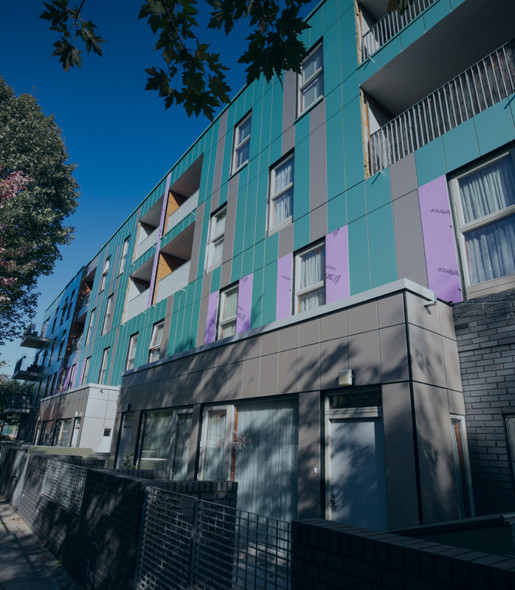A cladding project delivered using an innovative Gridline System and underpinned by strong resident engagement.

days on site
478
resident feedback forms
238
Cladding used
2,400sqm
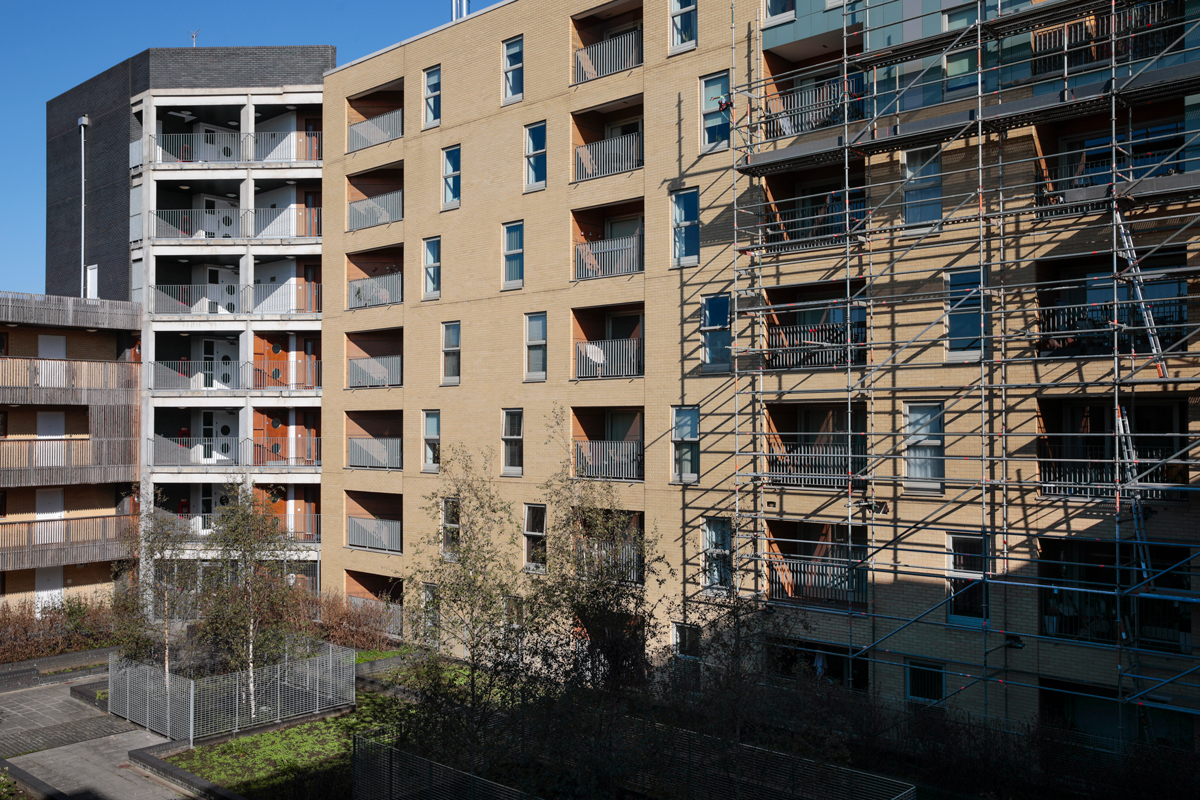
Bolanachi Building is a nine-storey mixed tenure apartment block, made up of 238 homes located in London.
In March 2018, Hyde conducted a type 4 (the most comprehensive level) Fire Risk Assessment (FRA), which raised concerns about the safety of Bolanachi Building. In line with advice from government and fire authorities, Hyde installed a waking watch. Residents were understandably concerned about their safety and in some instances, the value of their properties.
Despite a lack of clear regulatory guidance, Hyde felt compelled to take immediate action and assembled a strong team to carry out the works.
Initial project requirements were to:
- Replace cladding and insulation
- Leave the building watertight and secure at the end of each day
- Complete the work without disrupting residents’ internal services and finishes
- Complete works with a phased scaffold to the elevations to minimise disruption to residents and the local community.
- Ensure the safety of residents and their families.
- Engage fully with residents and leaseholders.
When Kier started on site they found significant complications with the underlying substructure. It was clear that the programme of works would need to be sequenced to remove and re-fix the panels in quick succession, rather than the original project requirement of a phased scaffold. This risked potential delays for the client and inconvenience for residents. Kier collaborated closely with Hyde and Martin Arnold and developed an innovative Gridline System to overcome this. The benefits of this system include:
- Better documentation and control to support any future works
- Minimal disruption to residents through better sequencing
- The facilitation of a three-stage sign off procedure.
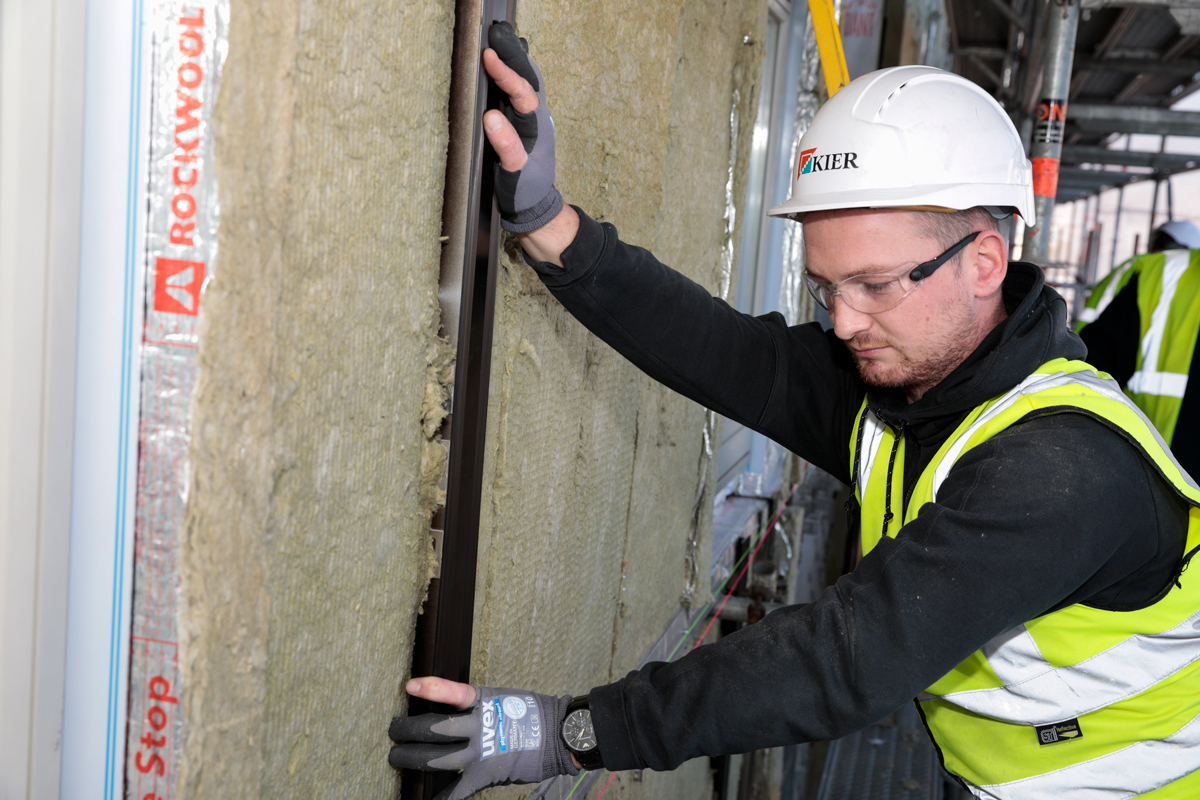
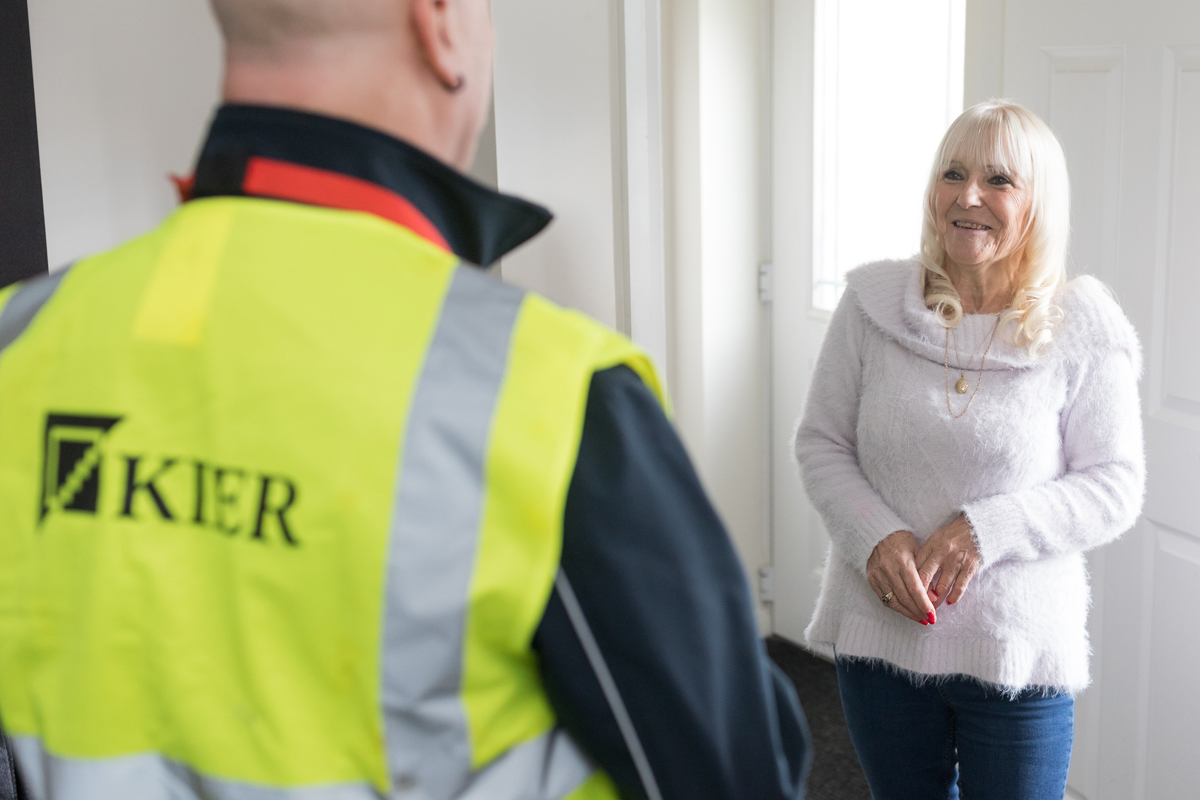
Ongoing and effective communication was key to the success of this project and so Kier went the extra mile when it came to resident liaison: they operated an open-door site office so residents with queries had access to staff at any time. The full programme of works was posted in all communal areas and the resident liaison officer made appointments with all residents whose properties were affected to inform them of the works at least two weeks in advance of the works taking place.
The resident liaison officer gathered feedback at the end of each sequence to document resident satisfaction throughout the works. These processes were more than lip-service; residents were actively encouraged to share their views on the project and raise any concerns.
True collaboration and partnership working between Kier, Hyde and Martin Arnold lay at the heart of this project’s success, with team members working together to deliver an exemplary outcome for residents on a highly sensitive project. This reaped further benefits when a new cladding system had to be found, after the original replacement system failed MHCLG testing.
There was no ring-fencing of responsibility. Instead, all came together to source the market for a replacement that could be supplied quickly and cost-effectively. Kier kept the site operational during this time, maximising the use of the scaffold and the team continued their philosophy of open and transparent communication with residents, being clear about the reasons for delays and the steps being taken to mitigate them.
As a result of this approach, trust between residents and the project team was maintained and zero complaints were received.
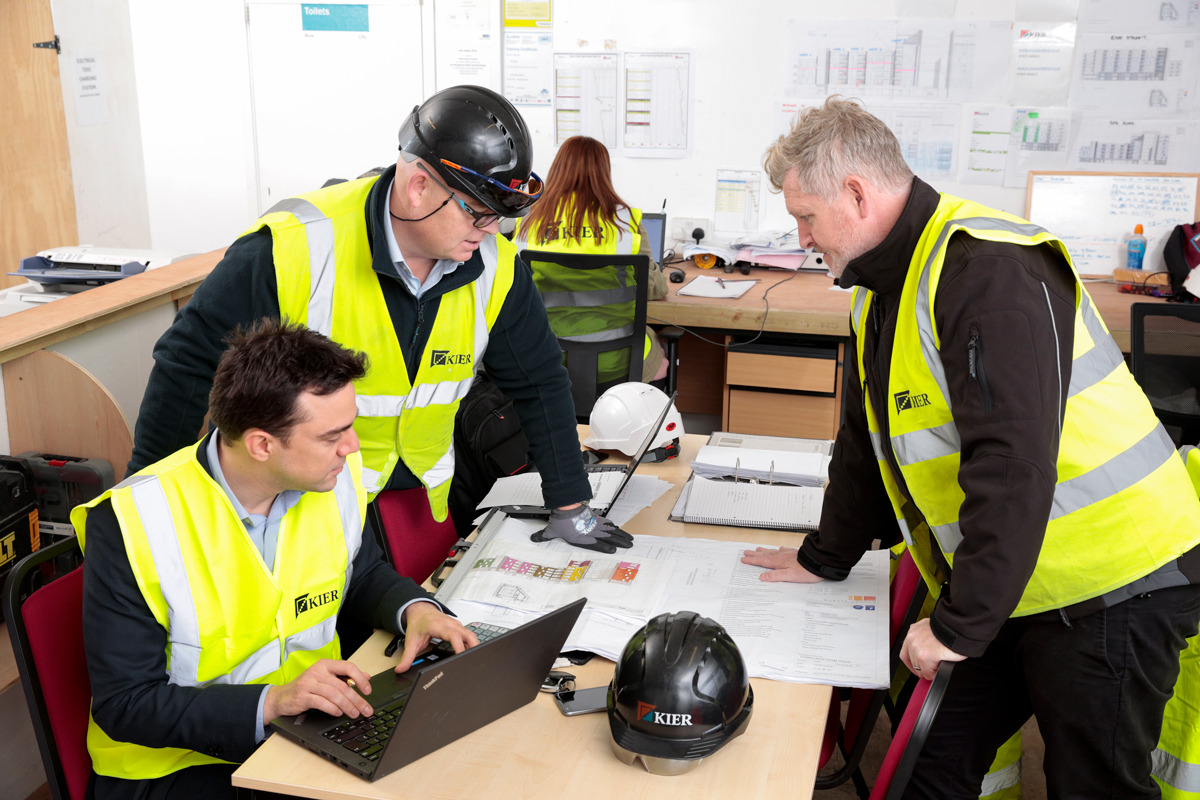
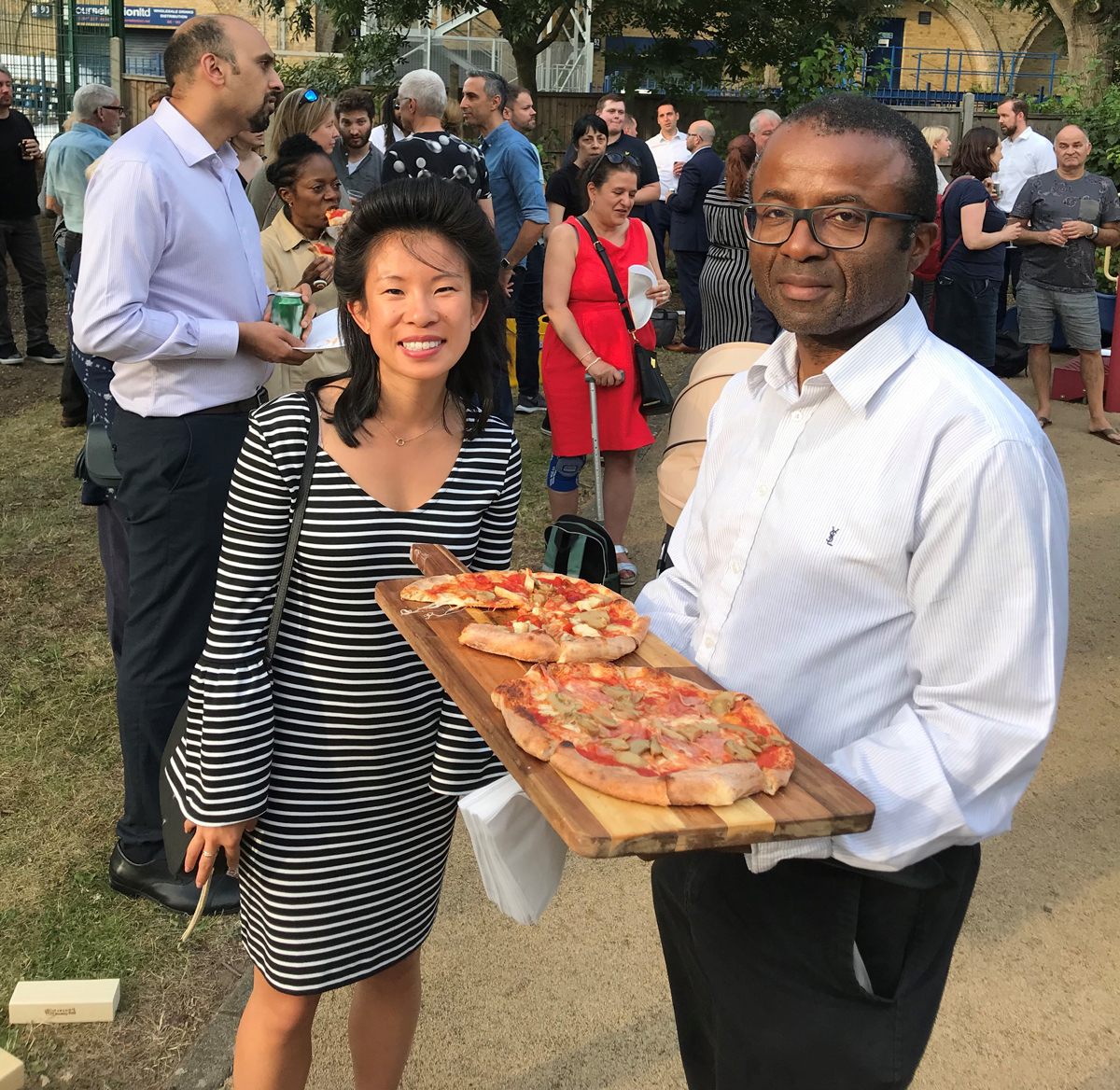
When the project completed, the partners held a celebration event, attended by more than 50% of residents. However, the legacy of this project goes beyond a one-off event.
The 2019 Building Safer Futures consultation outlines clear recommendations for better data keeping and documentation about works carried out on buildings. The full documentation provided through use of the Gridline System at Bolanachi is an example of how this project is ahead of the curve providing assurances to Hyde and residents for many years to come.
Numerous stakeholders (housing associations, local authorities, government and national media) have also visited Bolanachi, where this project is viewed sector-wide as an example of best practice in delivering cladding replacement without clear guidance, quality and resident communications.
This project has also left a positive impact on the local area too. As well as supporting local businesses while on site, three local individuals were employed (one labourer, one forklift driver and the resident liaison officer). And Hyde residents in neighbouring blocks have commented that, should building safety work be needed on their homes in the future, they would like them to be managed in the same way – a great endorsement of the approach.
Hyde, Kier and Martin Arnold all intend to use this approach on future projects. If it is to be adopted widely, as encouraged by emerging industry recommendations, clients and project teams must want to work together to make buildings safe for residents. Resident engagement, plus open and honest communication, is also vital for project success.

